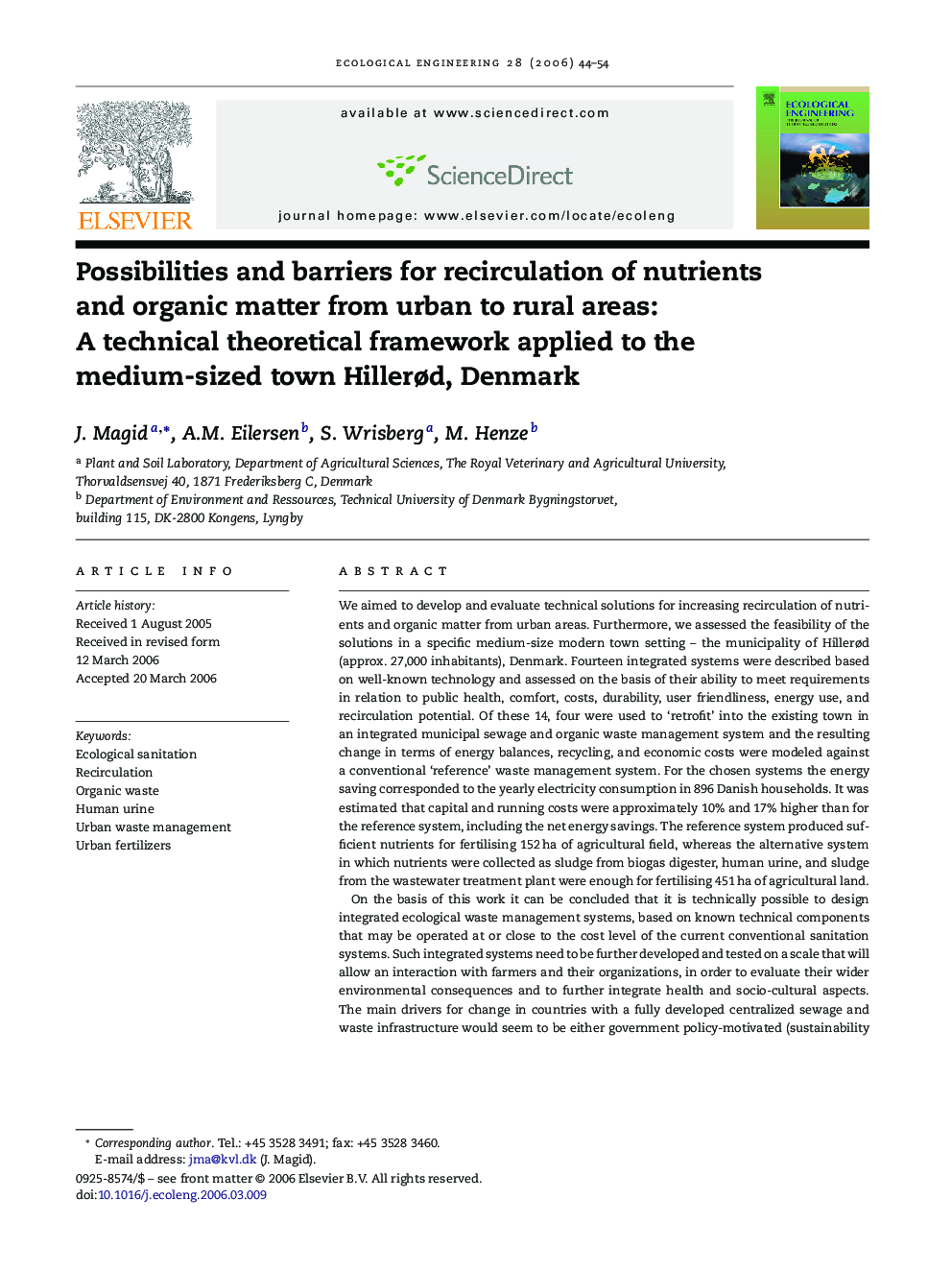| Article ID | Journal | Published Year | Pages | File Type |
|---|---|---|---|---|
| 4391251 | Ecological Engineering | 2006 | 11 Pages |
We aimed to develop and evaluate technical solutions for increasing recirculation of nutrients and organic matter from urban areas. Furthermore, we assessed the feasibility of the solutions in a specific medium-size modern town setting – the municipality of Hillerød (approx. 27,000 inhabitants), Denmark. Fourteen integrated systems were described based on well-known technology and assessed on the basis of their ability to meet requirements in relation to public health, comfort, costs, durability, user friendliness, energy use, and recirculation potential. Of these 14, four were used to ‘retrofit’ into the existing town in an integrated municipal sewage and organic waste management system and the resulting change in terms of energy balances, recycling, and economic costs were modeled against a conventional ‘reference’ waste management system. For the chosen systems the energy saving corresponded to the yearly electricity consumption in 896 Danish households. It was estimated that capital and running costs were approximately 10% and 17% higher than for the reference system, including the net energy savings. The reference system produced sufficient nutrients for fertilising 152 ha of agricultural field, whereas the alternative system in which nutrients were collected as sludge from biogas digester, human urine, and sludge from the wastewater treatment plant were enough for fertilising 451 ha of agricultural land.On the basis of this work it can be concluded that it is technically possible to design integrated ecological waste management systems, based on known technical components that may be operated at or close to the cost level of the current conventional sanitation systems. Such integrated systems need to be further developed and tested on a scale that will allow an interaction with farmers and their organizations, in order to evaluate their wider environmental consequences and to further integrate health and socio-cultural aspects. The main drivers for change in countries with a fully developed centralized sewage and waste infrastructure would seem to be either government policy-motivated (sustainability drive) or motivated by grass root movements, since the economic incentives for technology change are currently uncertain and probably small. However, in the middle-income countries, including part of the developing world, there is potential for considerable cost savings, and enormous need for development of waste and sanitation infrastructure, which would give impetus to more effective use of ecological sanitation.
